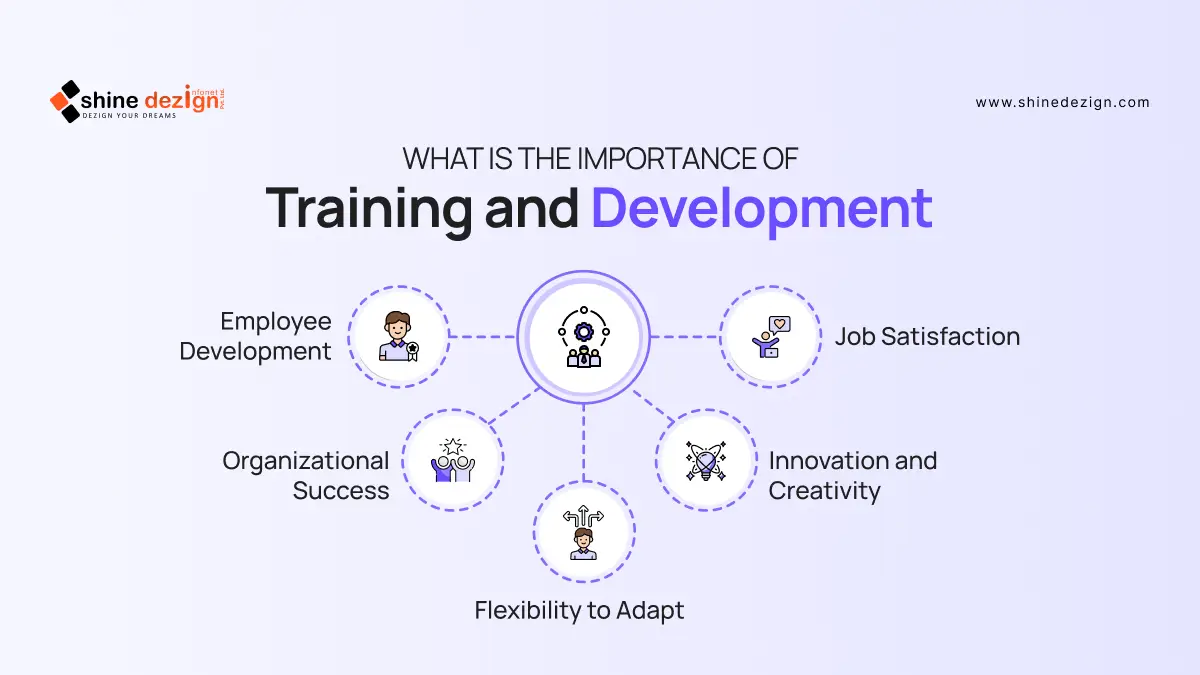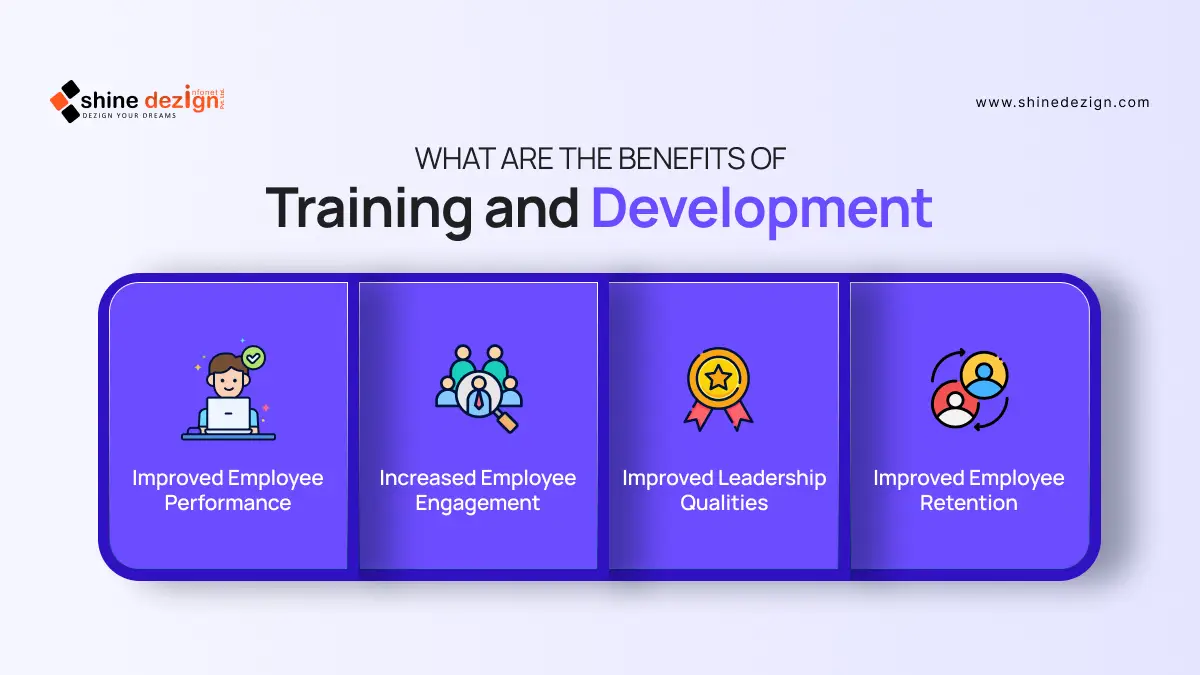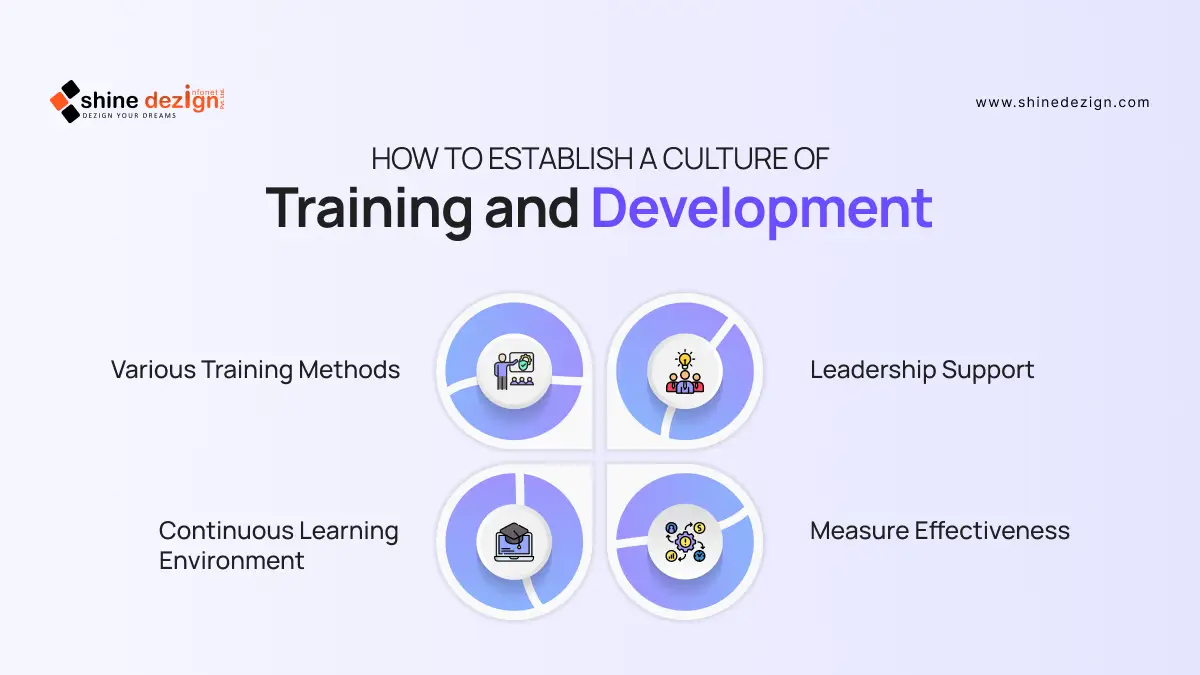Training and development are the building blocks of an effective organization. They are not only the causes to enhance the capabilities of employees but also assist in developing a general satisfaction from the job as well as effectiveness in productivity. In this blog, we are about to talk about why training and development are important, their benefits, and how organizations may establish a culture that encourages ongoing learning.
What is the Importance of Training and Development?
Training and development programs are designed to increase the level of skills, knowledge, and competencies of employees. Training and development programs are essential because:

Employee Development: Ongoing training allows the employees to grow in their profession, becoming more efficient and effective. With the new skills and knowledge acquired, the employee becomes capable of performing his/her tasks even better, which may lead to career growth opportunities. This type of growth not only benefits the individual but also enhances the ability of the organization as a whole.
Job Satisfaction: Trained staff feel valued and are more likely to be satisfied with their job. When companies invest in staff, they instill a sense of loyalty and commitment. Staff are more likely to stick with a company that values their growth, leading to a stable workforce.
Organizational Success: A well-trained and efficient workforce guarantees the overall success of the organization through better performance and productivity. Training renders the employees up-to-date with the current industry skills and knowledge, enabling them to adapt to changes and challenges effectively. Flexibility is needed to guarantee a competitive advantage in the market.
Flexibility to Adapt: In today’s fast-changing business environment, companies must be adaptable to implement new technologies, market dynamics, and government regulations. Training and developmental activities make employees adaptable and capable of embracing new challenges through the provision of required skills. This adaptability does not benefit only individual workers but also builds the strength of the company to thrive in a transforming world.
Innovation and Creativity: Training programs can foster a culture of innovation by challenging employees to be creative and think about innovative ideas. Employees, once exposed to innovative ideas and techniques, have a tendency to present innovative solutions. This culture of creativity can lead to improved products, services, and processes and eventually enhance the company overall.
What are the Benefits of Training and Development?
Investment in training and development yields numerous rewards to workers as well as organizations. Some of the key rewards are described below:

1. Improved Employee Performance
Skill to Improve Ability: Training equips workers with the capability to undertake their jobs efficiently. Not only does it enhance individual performance but even team performance. Employees well-trained are more apt to surpass or meet performance expectations, leading to improved overall productivity.
More Efficiency: Trained takes can work more easily and efficiently, which creates better outcomes. Since the takes already know what has to be done and when, takes can work independently and make well-informed decisions without the need for constant supervision and monitoring.
2. Increased Employee Engagement
Distinguished Employees: If a company invests in employees’ professional growth, it sends the message of value and commitment. These employees who feel important in their professional growth become more inclined towards their job, leading to greater amounts of enthusiasm and motivation.
Higher Retention Levels: More dedicated workers do not leave, hence reducing turnover charges. High turnover is detrimental to an organization as it leads to increased recruitment and training charges. Through more engagement through training, companies can build a more stable and committed workforce.
3. Improved Leadership Qualities
Leadership Development: Developing the leaders helps in the formation of core skills such as decision-making and communication. Leadership is the determinant of driving teams and organizational success. Investing in leadership development enables organizations to develop a talent pool of effective leaders that can navigate through challenges and inspire teams.
Stronger Management: Improved leadership competencies form a positive organizational culture. Improved leaders in management techniques can create an improved work environment that fosters teamwork, innovation, and open communication, all of which are cornerstones of a successful workplace.
4. Improved Employee Retention
Career Development Options: Workers are more likely to stay in organizations that have opportunities for career growth and development. When workers can see a clear line of promotion and are provided with the tools with which they may flourish, they are more likely to commit to the organization.
Good Working Environment: Learning culture leads to a good work environment that encourages employee well-being. When employees are made to feel that their development counts, they make the workplace culture better, ensuring teamwork and cooperation.
How to Establish a Culture of Training and Development?
In order to provide a culture of training and development, organizations can use various approaches:

1. Various Training Methods:
Companies can choose a mix of training aids for supporting different learning styles:
- Seminars: Offer structured learning experiences in the selected topics. Seminars can provide employees with useful knowledge from professionals in the field and provide networking possibilities.
- On-the-Job Training: Provide experience in the actual work setting. The technique allows employees to learn by doing, which may be more successful compared to classroom training.
- Mentorship: Pair senior staff with junior staff for one-on-one assistance. Mentorship fosters knowledge sharing and promotes strong organizational relationships.
- E-Learning: Utilize web-based training courses for flexible and scalable training. E-learning allows employees to learn at their own convenience and access a huge pool of resources, which makes it a perfect solution for busy workers.
2. Continuous Learning Environment
- Enable Lifelong Learning: Create a culture in which employees are encouraged to learn continuously. Organizations can create programs that encourage employees to pursue further education and learning.
- Provide Resources: Give learning resources, courses, and workshops. By providing resources, organizations can empower employees to take control of learning and development.
3. Leadership Support
- Management Involvement: Managers themselves need to take part in training programs in order to demonstrate commitment. When the management takes the lead, it sends a strong message that training and development are important.
- Mechanisms for Feedback: Create avenues for employees to provide feedback on training sessions. Continuous feedback enables organizations to understand the usefulness of their training programs and make changes.
4. Measure Effectiveness
- Evaluate Training Outcomes: Consistent checking of the effectiveness of training programs against measures of performance. Measurement of outcomes enables organizations to determine return on investment of training programs.
- Adjust Programs as Required:Use feedback to update and improve training programs. Continuous improvement ensures training programs are effective and responsive to addressing the organization and employees’ needs.
Conclusion
Building a culture of training and development is key to the success of any organization. Investing in employee development assists organizations in increasing performance, enhancing engagement, and improving levels of retention. A good training program not only builds employees but also enhances organizational culture and long-term success.
In the midst of today’s rapidly changing workplace, organizations that place high priority on training and development will be best positioned to adapt to change and thrive in their own individual industries. Through learning culture, an organization is able to have its people ready, motivated, and able to meet future challenges.
Your questions, our answers
Training and development are crucial for enhancing employees' skills, knowledge, and job satisfaction. They lead to improved performance, increased engagement, and better career growth opportunities.
Investing in training yields numerous benefits, including improved employee performance, higher retention rates, enhanced leadership capabilities, and a more engaged workforce.
Employees who receive training feel valued and supported, which fosters loyalty and commitment to the organization. This sense of value leads to greater job satisfaction.
Organizations can utilize various training methods, including seminars, on-the-job training, mentorship programs, and e-learning courses to cater to different learning styles.
Organizations can promote continuous learning by encouraging lifelong education, providing resources for development, and creating an environment that supports ongoing skill enhancement.
Leadership is essential in fostering a culture of training and development. When management actively participates in training initiatives, it demonstrates commitment and encourages employees to engage in their own development.













